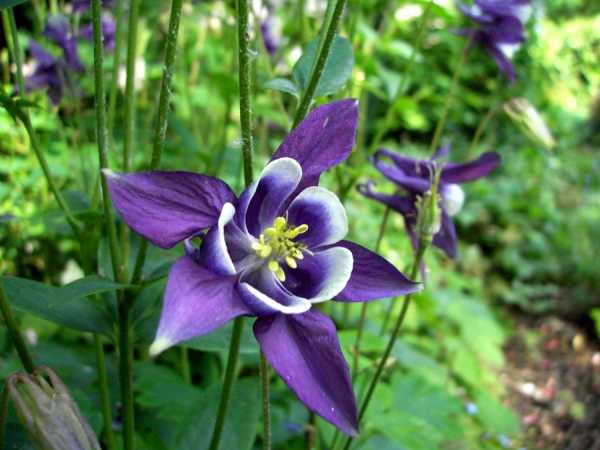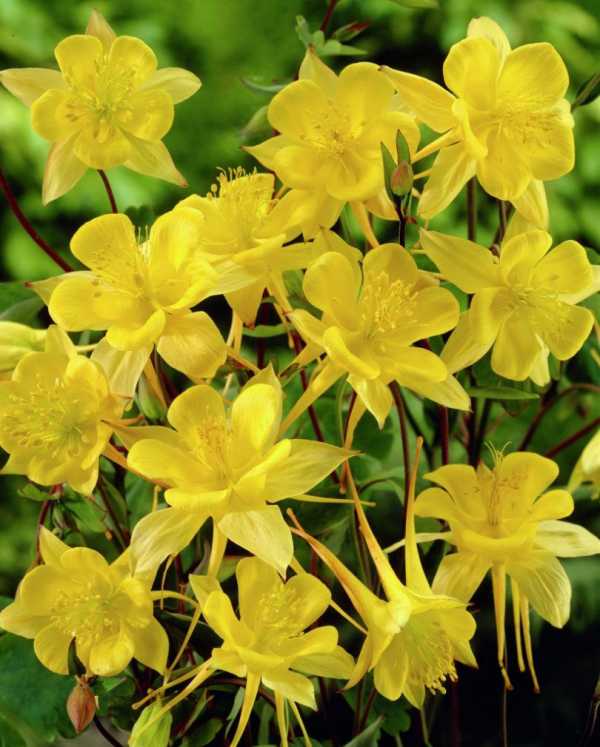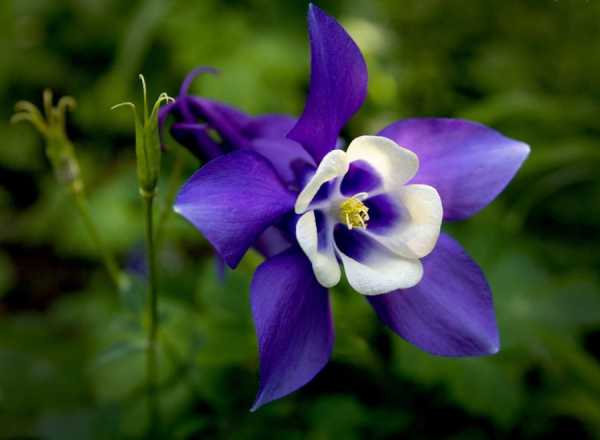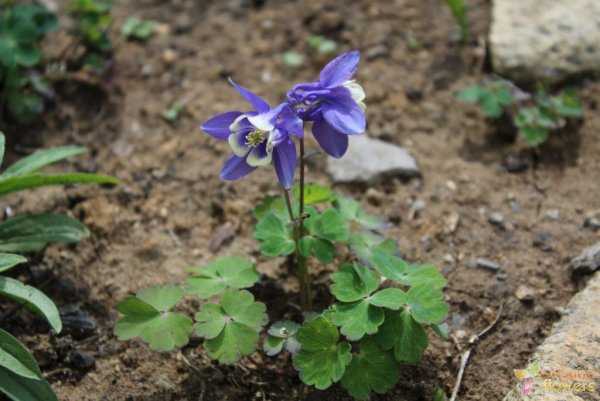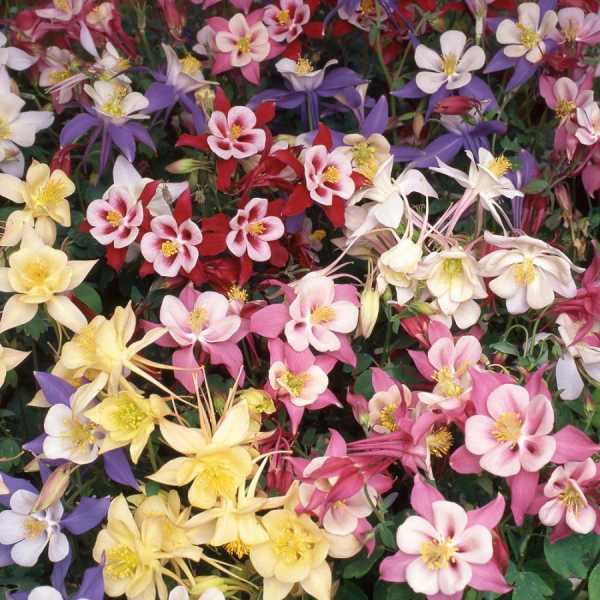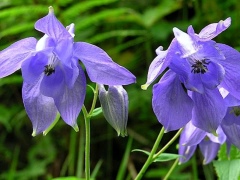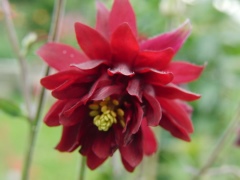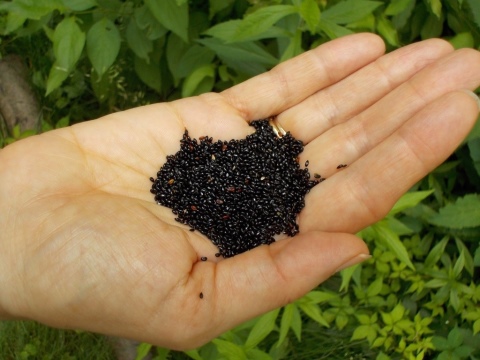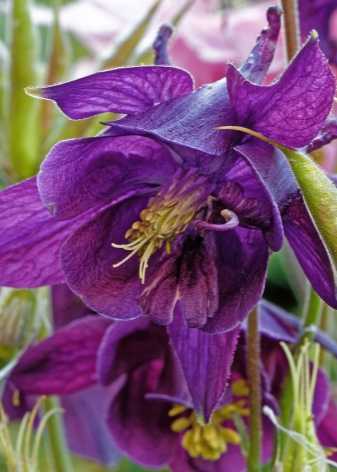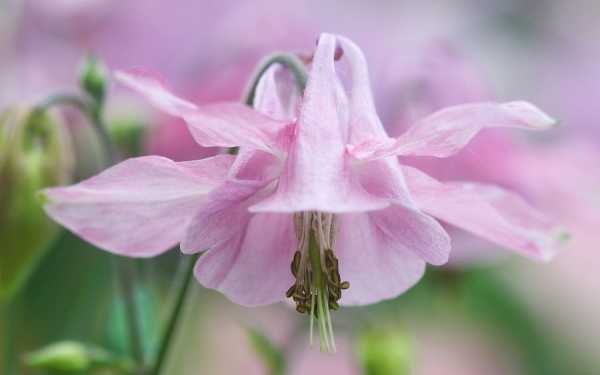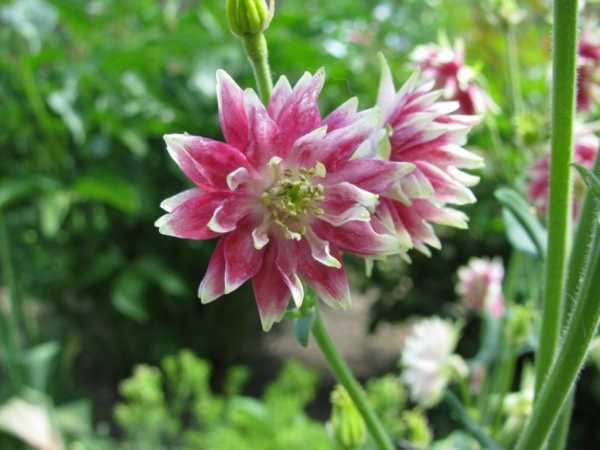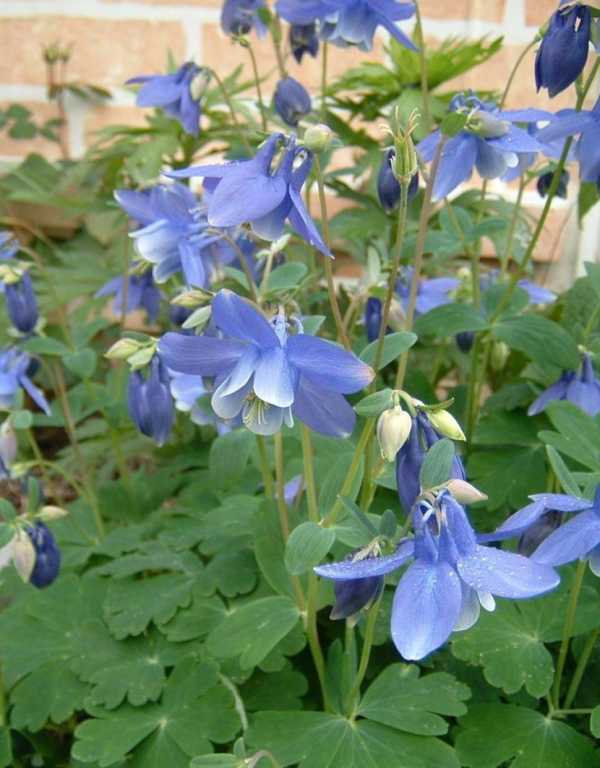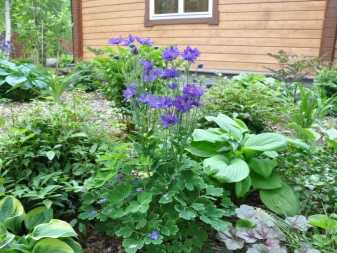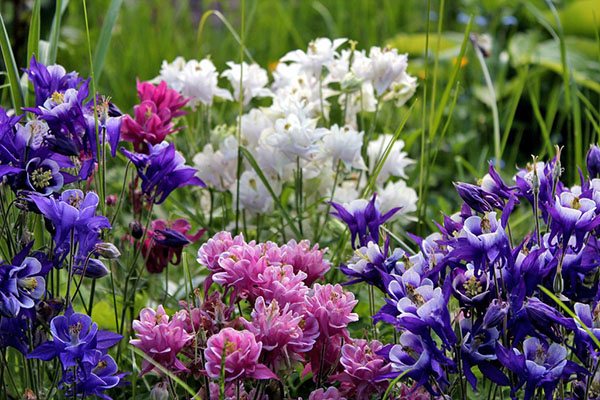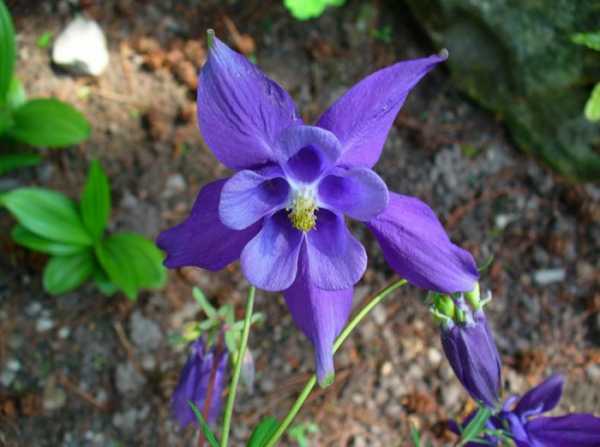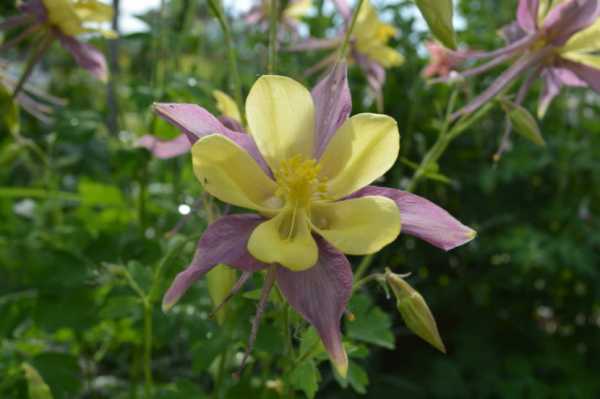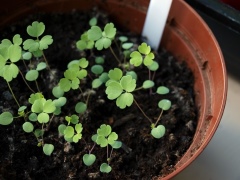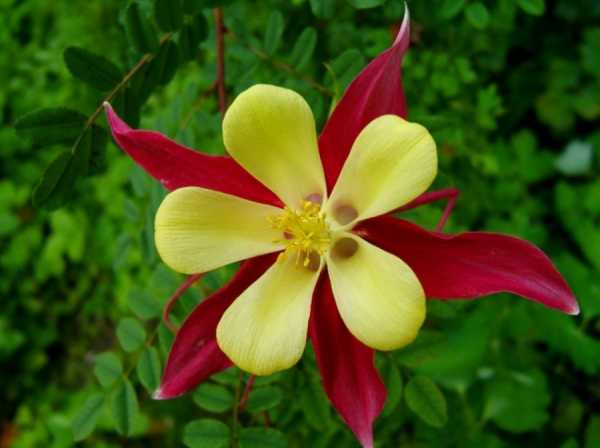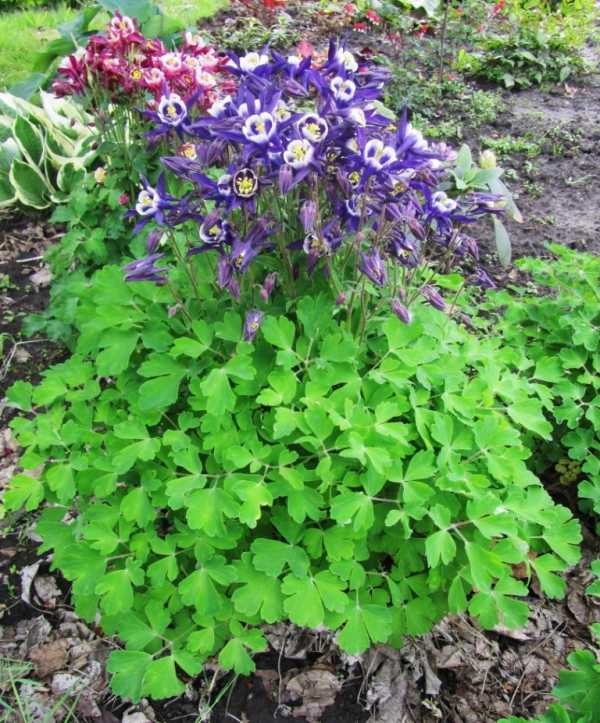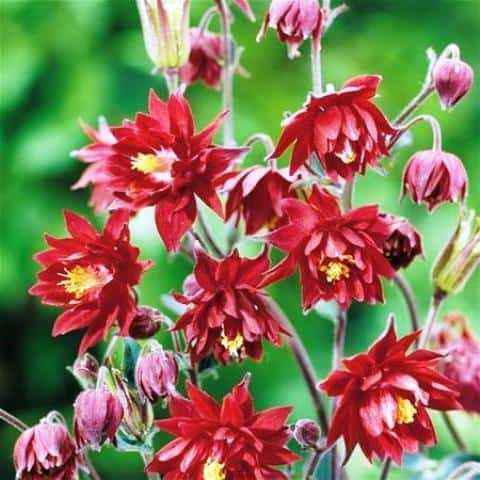How to properly care for a garden flower aquilegia
Aquilegia is moisture-loving, so the soil must be kept moist, additional watering is needed during the summer. It is necessary to water the aquilegia correctly, that is, often and abundantly by sprinkling, after watering it looks just fabulous, since the drops of water that are kept on the leaves shimmer and the rays are reflected from the bush. It is not without reason that the aquilegia is called the catchment area.
Care of the catchment also includes regular loosening, two dressings, and weeding.

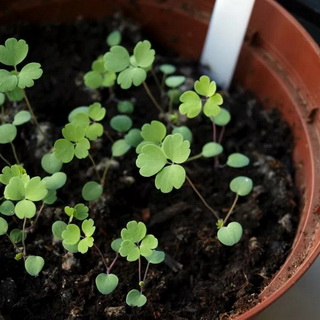
You don't need to feed Aquilegia if you planted it on fertile soil. If the soil is poor, then once a season, apply half a tablespoon of whatever mineral fertilizer you have by simply scattering it around the plant on wet soil. As a fertilizer, it is better to use complex fertilizers, for example, nitroammophos or nitrophoska.
The second feeding is carried out at the beginning of flowering: 2 tablespoons of nitrophoska, 1 teaspoon of urea are diluted with 10 liters of water.
The third feeding is carried out in June after flowering and pruning of plants: 1 tablespoon of urea and potassium sulfate are diluted in 10 liters of water.
It is recommended to add fertile soil under the bushes annually.
It is impractical to grow this crop in one place for more than 5-6 years, it is better to plant new young plants.
Knowing how to care for aquilegia, you can avoid such troubles as damage by leaf spot, powdery mildew, damage to aphids.
How to use aquilegia in the garden - photo with options
Aquilegia in the garden can be used for the foreground in mixborders or beds, in flower beds or in separate groups on lawns.
Aquilegia, or catchment, is one of the few plants for shady places, group plantings under trees, in near-trunk circles. It looks especially decorative in combination with ferns and cereals, next to plantings of lupine, bells, irises, bergenia, astilbe, hosts. You should not plant this flower in the background, since it loses its decorative effect. The best place for perennial aquilegia flowers is next to benches, gazebos, along the paths, that is, it should be planted where you can admire its original flowers close up.
The catchments are suitable for cutting and forcing. It is recommended to cut flower stalks for a bouquet, on which 2-3 flowers have opened.
Not all types of catchment areas, photos and descriptions of which were presented above, are easily driven out. As forcing machines you can use:

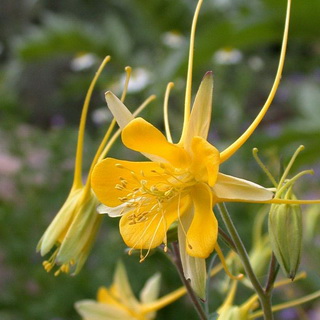
Canadian aquilegia (Aqullegia canadensis), Golden aquilegia (A. chrysontha Gray.),
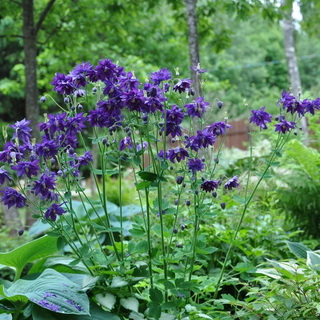
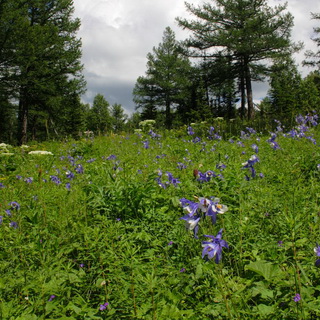
Aquilegia blue (A. coerulea James.), Aquilegia glandular (K. glandulosa Fisch),

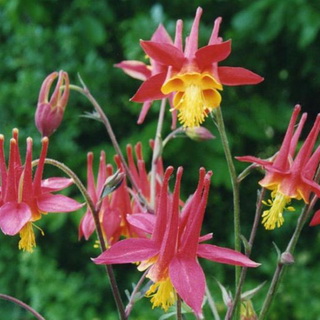
Aquilegia Skinner (L. Skinneri Hook.).
In the fall, well-developed biennial plants should be dug up, planted in large pots with nutritious soil, watered, set in a shaded place and left there until a steady cold snap. Then bring it into a cool room, water it occasionally. In January, the pots can be moved to the windowsill, away from the heat source. During the growth period, water the plants more often. Flowering occurs in March - April. After distillation, aquilegia is planted in the ground or dug in with the pot into the garden after preliminary transplantation.
The photo presented here shows that the aquilegia in the garden takes quite a worthy place and looks organically in combination with other plants:
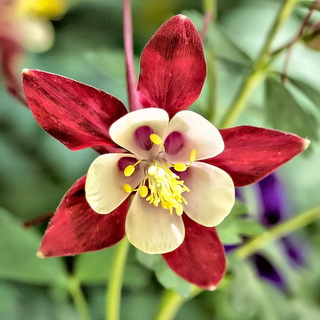
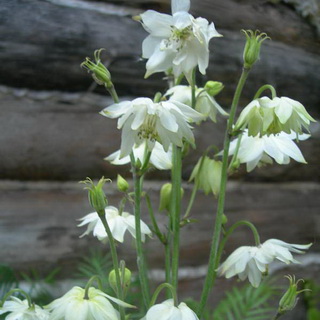


Views
The main advantage of aquilegia is its wide variety of varieties. All of them are distinguished by color, flower shape, and each of them has its own characteristics in terms of care.
Catchment canadian
This plant is native to North America. Its peculiarity is in its unusual color of flowers - red and yellow. If you want to buy such a plant, then on sale it has the name Small Flashlight. The height of the bush is 25 cm. The flowers are red in color, and in the center are yellow stamens. But what the Astra Peony American Branch mix looks like in the photo can be seen in this article.

Catchment canadian
Alpine
This flower is mountainous. It is under the protection of Europe, although its numbers are stable today. The petals are bright blue in color. They are long and slightly curved. And here is what the Alpine perennial aster looks like, and where it can be planted. described in this article.

Alpine catchment
Blue
It grows in the mountains. Its distinctive feature is in double flowers, which have a diameter of 6 cm. The petals are white, and the sepals are pale blue. It will also be interesting to find out how the landing and leaving of Tui blue takes place.
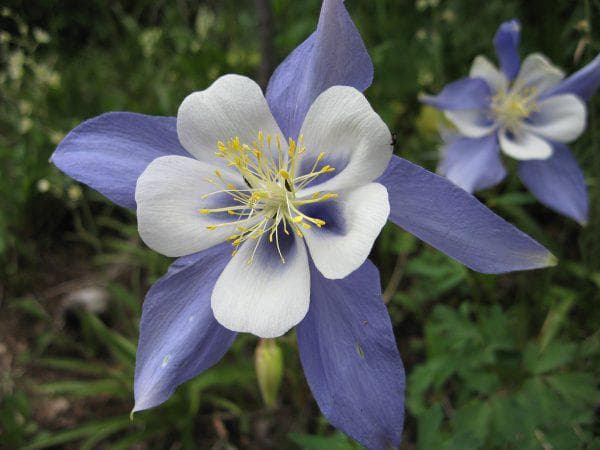
Catchment blue
The most common are the following varieties:
- Citrina
- Rosea,
- Candidissima,
- Alba.
When choosing this type of plant, it is necessary to pay attention to such varieties as "Music F1" and "Origami F1". The first variety is characterized by a large bush height - up to 100 cm, large flowers, the diameter of which is 10 cm
The color scheme can be very different. But the second variety offers plants of lower height - up to 55 cm.
You may also be interested in learning about how to plant Stock Rose with seeds.
Fan-shaped
This variety came from Korea and Japan. Aquilegia has a short growth - up to 30 cm.The leaves are equipped with a blue bloom, and the diameter of the flowers is up to 3 cm.There are a large number of varieties of this plant:
-
Cameo F1. This plant variety is characterized by a different color of flowers: blue, pink, cherry, pink. Moreover, they all have white blotches.
-
Mini-Star. The height of the culture reaches 15 cm. It has blue and white flowers.
-
Blue angel. This plant is frost-resistant, so it can be grown even in the northern regions. The height of the bush reaches 20 cm, and the diameter of the flower is 6 cm. But how the blue ball is grown from Ageratum seeds, and how it looks, will help to understand the photo from the article.
Olympic
This plant has large flowers. Their diameter can reach 10 cm. The spur is presented in the form of a hook, the length of which is 1-2 cm. The petals are pink in color, and at the edges they have a white edging.

Olympic catchment
Small-flowered
This plant has small flowers, the diameter of which reaches 3 cm. Their color is blue-purple, and white at the edges. You can meet such a culture only in the wild. But to grow it at home simply will not work.

Small-flowered catchment
Glandular
The height of this plant reaches 15-60 cm. Its flowers are large, have a bright blue color, and along the edges are yellow or white edging.
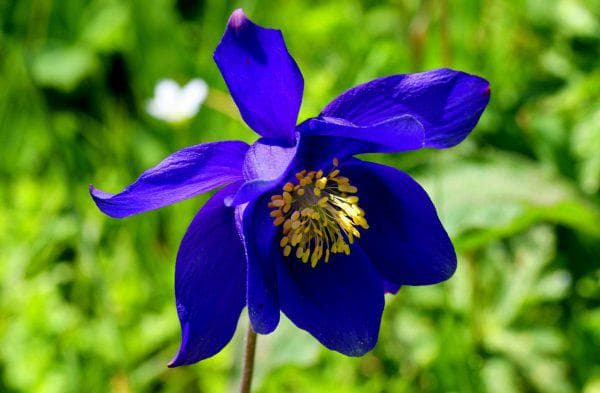
The catchment is ferrous
Ordinary
This plant has become widespread throughout Europe. It has small flowers with a diameter of 4-5 cm. The color can also be different - blue, pink, red and white.
Ordinary aquilegia can be represented by various varieties, among which are very popular:
-
Clementine Salmon Rose. Plant height up to 30 cm. Its flowers are pink.
-
Winky Red-White. This variety has white-pink double flowers. The height of the bush reaches 35 cm.
- The plant is quite tall, has elegant double flowers.
-
Tower navy blue. The height of the bush reaches 70 cm. It has double flowers of dark blue color. Their diameter reaches 5 cm.
-
Barlow. This plant is famous for its elegant double flowers, presented in various colors. The petals are multiple, and the leaves are delicate.
-
Blue Star. Already based on the name, it becomes clear that these are blue flowers that have a white border around the edges. They are also terry, and their diameter reaches 5 cm.
-
The Red Star.A short plant whose branches are red and white in color. They are referred to as terry. They can grow in our conditions. How is the planting and leaving of the Castor bean, and how they look in the photo.
-
Birds of Paradise. This variety has medium flower sizes. They are pink-white or blue-white in color. The height of the bush is large, up to 25 cm.
- Biedermeier. This culture has a short stature - up to 30 cm. Flowers reach 5 cm in diameter, have a blue-white color.
Types, varieties of aquilegia and photos
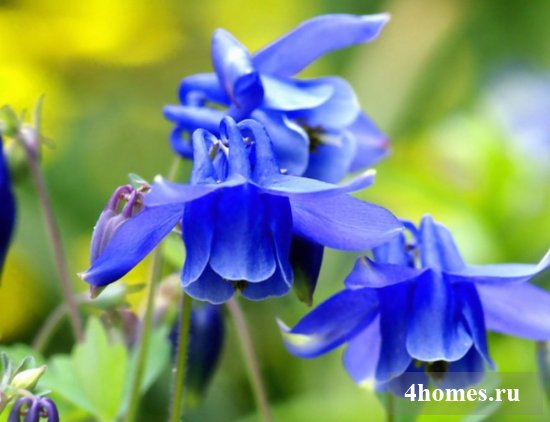
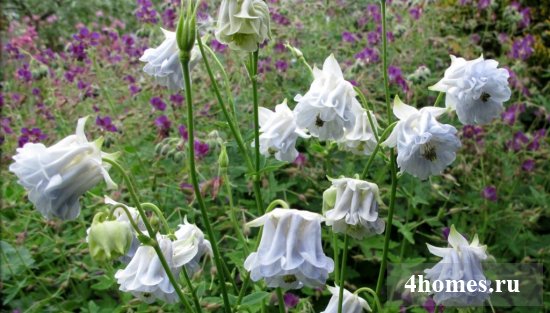
Today, aquilegia (catchment or eagle), of which there are about 120 species in nature, is grown only in the form of hybrid varieties. Most of the specimens are in no way inferior in beauty to their wild counterparts, and sometimes even surpass them in the brightness of a two-color or monochromatic color and a spectacular appearance.


The most common in our area is the common aquilegia, which perfectly tolerates severe winters with temperatures down to -35 ° C. The perennial reaches a height of 40-90 cm, and five-centimeter flowers are distinguished by a variety of colors. This type also includes hybrid aquilegia, very beloved by many gardeners.
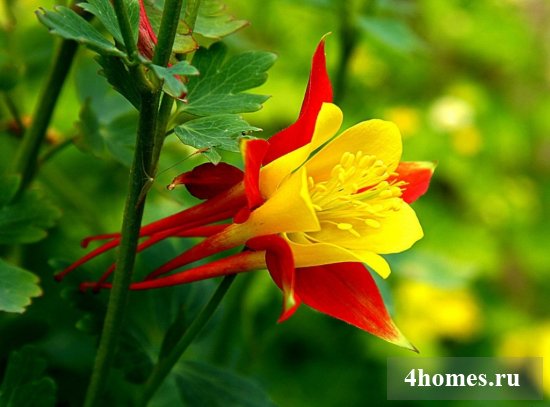
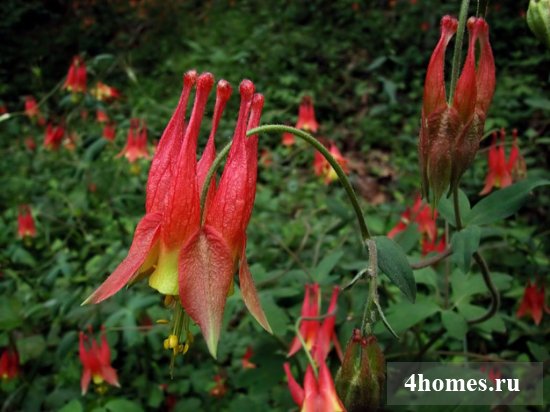
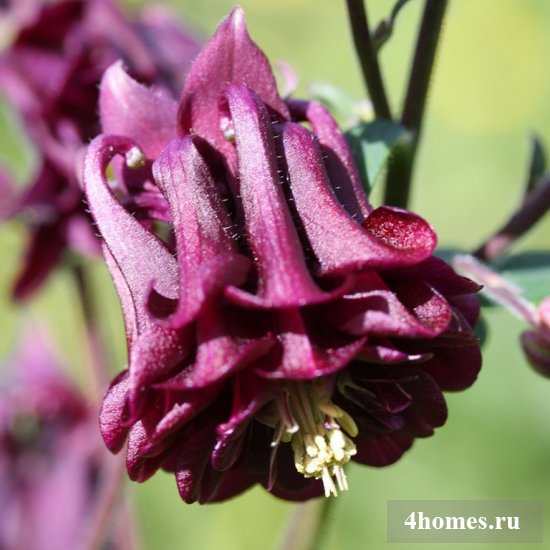
The most popular varieties:
- Crystal (Kristall);
- Spring Magic;
- Green Apples;
- Firecracker;
- McKana's Giants (Mckana's Giants);
- Pink Bonnets.
Most hybrid varieties go well with astilba, the photos of the compositions of which are striking in their bright contrasting shades.
The following types of aquilegia are also popular:
- Siberian with purple flowers. Pleasing to the eye for 1-2 months;
- Stunted, fan-shaped. Native to Japan and Korea with numerous cultivars;
- Olympic Aquilegia. It has a long flowering period and beautiful pink and blue hues;
- Blue with regular or double large bicolor white-blue flowers;
- Canadian. Grows well in the shade and pleases with an unusual red-yellow color;
- Golden-flowered. Winter hardy and very beautiful with spectacular yellow buds decorated with long spurs.
Aquilegia is the perfect choice to add an exotic touch to your garden. The features of planting and care in open ground, discussed in this article, clearly show that this perennial is unpretentious. It perfectly withstands sub-zero temperatures and boasts a unique appearance of flowers of the most incredible spectacular shapes and colors.
Caring for perennial aquilegia when planting seeds and cuttings
If you really want to grow a beautiful perennial aquilegia, then planting and caring will require some knowledge and understanding of the plant's needs.
The flower has a sufficiently powerful root system, so the issue of watering for the catchment area is not acute. She herself can extract the moisture she needs from the deep layers of the soil. For this plant, moderate watering is enough, which can be increased during the dry season in summer.
Flowers of the catchment after planting and care must be constantly freed from weeds. While the plant is small in size, a large weed can drown out tender sprouts. Therefore, weeding is very important in the first months after planting in open ground.
Look at the types of fertilizers that are used for planting and caring for aquilegia in these photos:



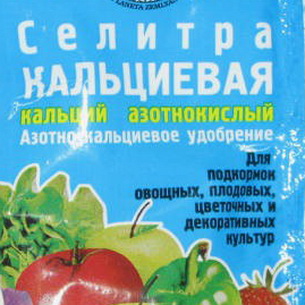
For 3 months, you need to do at least two feeding.
The active growth of the plant requires some minerals:
- superphosphate;
- potassium salt;
- mullein;
- saltpeter.
From the end of spring and in the first months of summer (from May to the end of July), you can feed the plant with such a mixture.
After the flowering period of the plant, the aquilegia is removed and cut to fit the outlet. If during the growth period you notice that the plant is affected by some kind of disease, then it is better to burn the cut branches. If the catchment is healthy, the trimmed parts can be left to rot in the compost pit.
Therefore, to preserve and prevent self-scattering, cover the peduncles with gauze or light loose fabric.
At the end of flowering, gardeners can start planting and dividing the catchment.
Note that in the third year of its growth, the root system of aquilegia grows strongly and this can be seen with the naked eye, since thickened plant roots can be seen on the surface of the soil.
It is important to remember that even with the most careful maintenance, the maximum period of catchment growth in one place is 5 years. The plant needs to be updated so that your garden does not lose the sophistication, tenderness and richness of colors that aquilegia (catchment) gives
The photo below clearly demonstrates how beautiful your site can become - take a look and see for yourself:
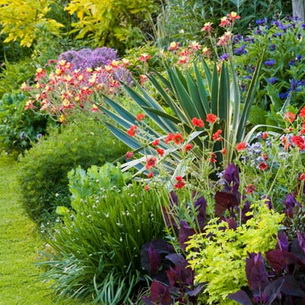



Does the plant get sick and what affects the aquilegia most often?
The catchment, like any other plant, is susceptible to disease. Most often this happens due to improper care or poorly chosen landing site.
The most common diseases of aquilegia (photos of flowers affected by diseases, see below) are:
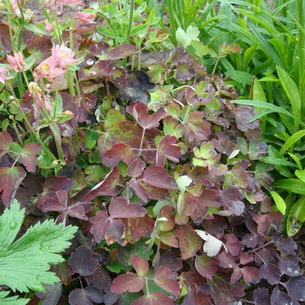



Rust. The affected plant elements must be removed. The cleaned catchment area is treated with soapy water with vitriol or any preparation containing sulfur is purchased and sprayed.
Gray rot. The sooner the places damaged by this disease are removed, the better for the plant. The cut off, affected parts are subject to burning. Unfortunately, there is no effective drug in the fight against this disease. Therefore, it will be quite difficult to cope.
Powdery mildew. Probably the most common condition for aquilegia. It is clearly visible on the stems and leaves of the plant, which are covered with a fungal bloom. The best way to fight is to treat the affected flower with gray colloidal. If the treatment is not done on time, then the plant dies.
Do not bypass the catchment and various pests. Most often, aphids and spider mites can settle on the leaves and stems of the plant. Slightly less common are scoops, nematodes. The latter pests are quite dangerous for aquilegia. It is possible to remove nematodes only by transplanting the plant to a new place, adding garlic or onions to the flower bed so that the parasites do not settle in a new place. Affected plant stems and leaves are burned by nematodes.
Do not be afraid to decorate your site or flower bed with this delicate flower. With proper care, aquilegia will surely give you a bright and rich bloom that will inspire and charge you with positive.
The video will tell you about the beauty of aquilegia, watch it and see for yourself:
Growing soil

The place for planting aquilegia is chosen very seriously, because the plant is sick during transplantation, and in this case it is difficult to grow it. Loamy soil is most suitable for the plant, where water often stagnates. He does not like aquilegia and direct sunlight, because in the hot sun the stems of the plant may die, and the plant may die completely. The soil must also be carefully prepared. Every year, under each bush, 8 cm of old soil is removed and a new one is added, which is mixed in half with humus. And in the summer, it is required to regularly loosen the soil, but not deeper than 20 cm. Top dressing is carried out by applying fertilizers in a liquid place under the roots. This should be done on cool rainy days. If the summer is hot, and top dressing must be done, then it is performed in the morning or in the evening, combining watering with shading for at least a day.
Chinese and Japanese aquilegia
These varieties of eagle differ from others not only in the place of natural growth, but also in the absence of a spur. That is why most plant species have the prefix "false". Mostly all existing species are located within Korea, China, Mongolia, Japan and Central Asia.

Pseudo-anemic watershed
This variety is usually referred to as paraquilegia.Its natural habitat falls on rocky terrain, more precisely, crevices in the rocks. Cultivars from this species, as a rule, have a strong root system. The stem itself grows up to about 20-30 cm high. It is leafy in structure. At the same time, the foliage is trifoliate and small in size. From above they are saturated green, and from top to bottom they are gray-gray. Flowers of delicate lilac colors. They can reach a diameter of up to 4 cm. In this case, the fruit means a leaflet with small seeds.

Small-leaved pseudo-catchment
Like the anemone aquilegia, the small-leaved eagle should also be classified as paraquilegia for most of its parameters. The same small seeds, only more oblong in shape and with a smooth surface. This plant is also considered to be undersized. Of the main differences, the following features can be distinguished: the flowers are smaller than those of the anemone-like pseudo-water collection, only 3 cm in diameter. Their color is light blue. A large number of deeply dissected leaves predominate.

Aquilegia adox
The plant belongs to the genus of semi-aquilegia. This flower is considered a stunted perennial. The maximum height of the stem can reach only 30 cm. The flowers are cubic in shape, and the petals are colored in a light cinnamon shade. The sepals are reddish-brown in color. Special formations with membranes are located around the stamens.
Please note that this species does not have a spur

More details about aquilegia can be found in the video below.






